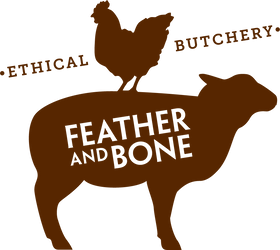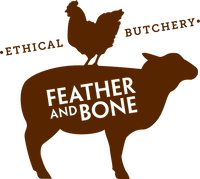One bad day
For a detailed explanation of slaughter processes, please read the chapter, 'Looking the Animal in the Eye - Understanding the slaughter process', in our book The Ethical Omnivore.
Slaughter - one bad day
Every attempt is made by our producers to practice low stress handling throughout the growth cycle and during the transport and processing of their animals. At our end, our committment to only buying whole animals means we are able to scrutinise every carcass and maintain a high level of quality control.
Occasionally errant abattoir and/or transport practices can undermine the best practice of the producers and this will be reflected in the quality of the meat. We, and the farmers we work with, strive to minimise this through close liaison with transport and processing facilities.
We purchase animals directly from the farmer which means that there is usually only one stop between the farm and our cool room.
At their end, the farmers we represent work very hard to establish and maintain good relations with their abattoirs. Our job is to ensure that we carefully scrutinise each body that arrives to ensure that the slaughter and transport matches the high standards set by the growers. If we see anything awry, we contact the farmer immediately and they then discuss it with the abattoir.
This kind of scrutiny and feedback loop is only possible because we're receiving whole animals with a very short, traceable supply chain. It's just not possible in the world of boxed meat.
Australian abattoirs are well-regulated to a high standard and it's rare for us to find any issues.
Some of the abattoirs from which we receive carcasses include:
- Cowra
- Eversons
- Wollondilly
- Nyngan
- Radfords





